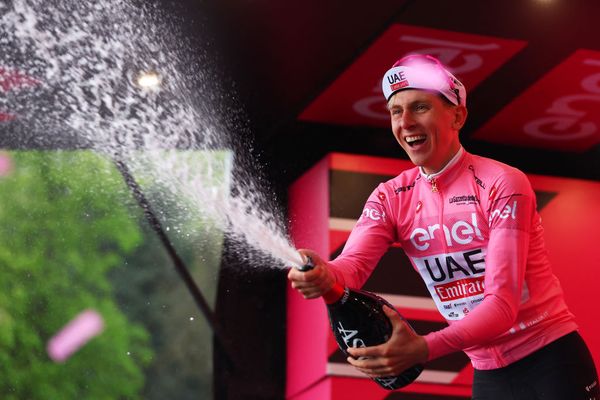Racing rewind: Fabian Cancellara's most forgotten glory at Milan-San Remo
Why Fabian Cancellara's only Milan-San Remo's victory was one of the best moments of his career
Logan Jones-Wilkins
Junior Writer - North America
© Getty Images
Fabian Cancellara won the 2008 Milan-San Remo with a blistering late race attack
Fabian Cancellara’s career was an expression of brutality. Spartacus, as his moniker suggests, took no prisoners.
Not only is Cancellara one of the greatest Classics riders ever, with three Tour of Flanders wins and three editions of Paris-Roubaix to his name, but he also won the time trial World Championships four times and took eight stage victories at the Tour de France, wearing the yellow jersey for a total of 29 days. He retired in 2016 after claiming his second Olympic gold medal, and his career is unforgettable for any fan of cycling who watched racing over the first two decades of the 2000s.
Yet, in remembering Cancellara’s brilliance, a moment that is often forgotten is his 2008 Milan-San Remo victory. While Spartacus’ exploits in France and Belgium are most often cited as his greatest triumphs, Milan-San Remo is a telling case because it is a race that even some of cycling's biggest stars miss from their palmarès. You don’t need to look beyond the 2008 podium to see an example, with a fresh-faced Philippe Gilbert in FDJ kit standing on the podium in third. While Gilbert would go on to win the four other Monuments, a win in San Remo would never come.
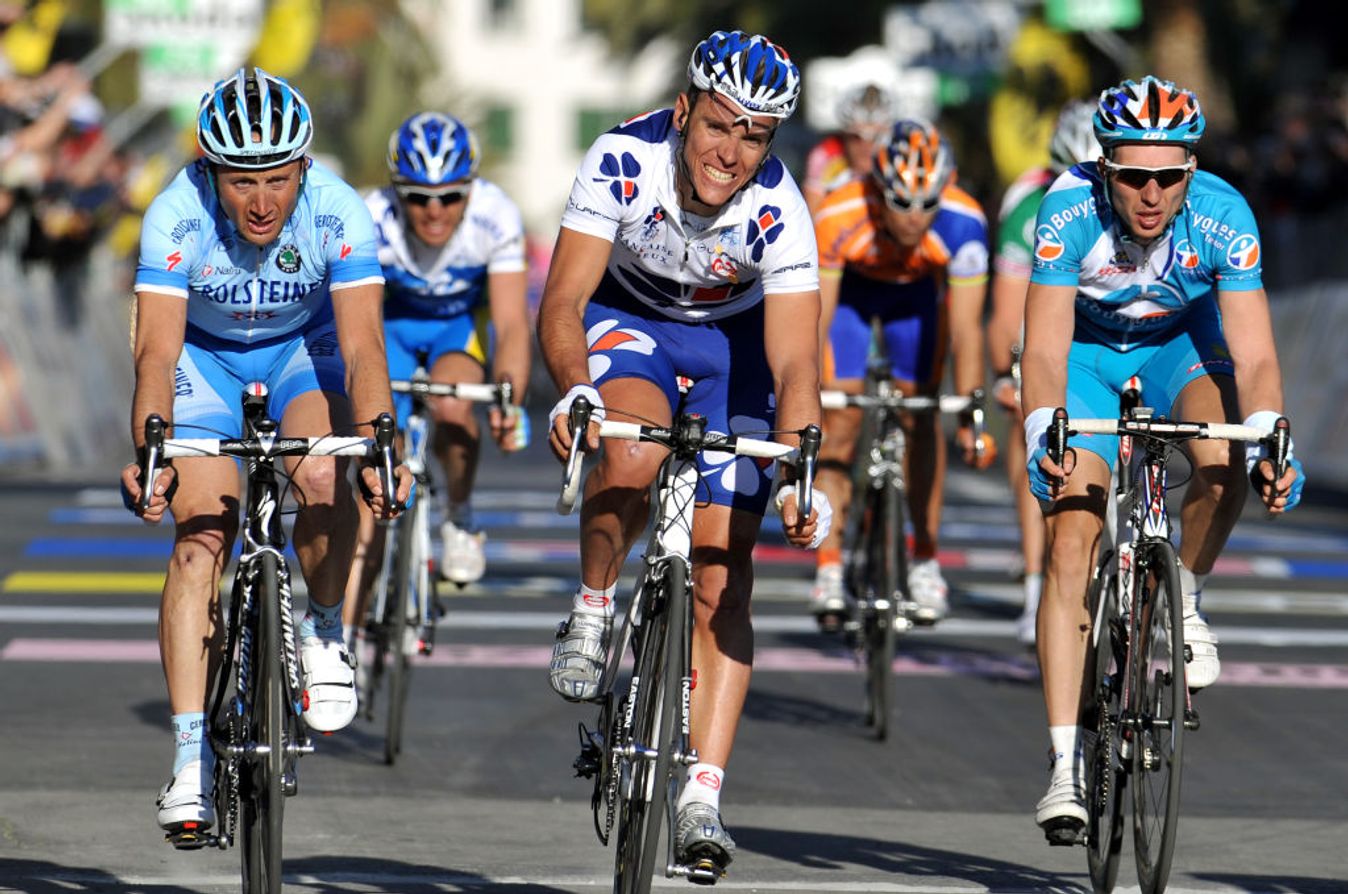
© Getty Images
Philippe Gilbert finished third in the sprint behind Cancellara
In rewatching the 2008 edition of Milan-San Remo, the beats of cycling are familiar. Milan-San Remo, in particular, has attributes which are inelastic: the climbs of the Cipressa and the Poggio, or the soft Spring light shining on the villas, bungalows and greenhouses of the Ligurian Coast. The racing dynamics, too, are serialised. Changes, sure, but all within a narrow set of narrative bumper guards.
The cast of characters, however, couldn’t be more different. In 2008, the Italians ran the roost.
Into the final 20 kilometres, the race was headed by a breakaway of Italian stars. Paolo Bettini was resplendent in his rainbow bands and charging off the front. Bettini, in his final season in the peloton, was joined in the move by Paolo Savoldelli. The Italian, a two-time Giro winner, was also in his last season and the late race escape was one more moment in front of the tifosi.
Joining them, along with three other lesser-known riders, was Davide Rebellin in his 16th professional season. Unlike his Italian companions, Rebellin was certainly not in his final season as he had 15 seasons left in the peloton.
Read more: Davide Rebellin: 'A boy that enjoyed the bike more so than everything'
The front of the peloton was also an all-Italian affair with Liquigas steamrolling their way to the front of the group on the opening hairpins of the Poggio, bringing the illustrious but ultimately doomed breakaway to heel. Liquigas’ talisman was Fillipo Pozzato who won the race in 2006. Battling with Liquigas for stewardship of the front was Cancellara’s CSC squad.
On the Poggio, Liquigas’ tempo was upset by a rogue attack from Italian Alessandro Bertolini, who accelerated on the lower slopes where panache seemed to be a priority over reason. Bertolini was joined by domestiques from CSC and Liquigas. The other favourites played an elaborate game of tactical chicken that seems to define the Poggio every year. The escape was short-lived, as the peloton absorbed the attackers on its way through the serpentine upper slopes of the climb. There, Gilbert lit the touch paper and accelerated in a manner à la Van der Poel circa 2023.
Yet, unlike the Dutchman, Gilbert’s move was neutralised by the final swooping turn onto the descent. Cancellara, all of a sudden, was present and ready, as the remains of the longest day in cycling filtered over the top behind him. Regardless of the year, the Poggio always provides disproportionate destruction for its size.
By the end of the downhill, Pozzato, Rebellin and Bertolini had a small advantage over a cagey group of chasers, with the larger peloton of sprinters trailing a handful of seconds further back. In an instant, just as he had on the top of the Poggio, Cancellara glided across to the trio. The rest of those in the front of affairs accelerated across to the four favourites as the road flattened into the boulevard that carries the race to the sun-washed Via Roma.
Read more: Milan-San Remo – 10 riders to watch
Euskaltel-Euskadi’s Iñigo Landeluze, a rider whose only pro victory was overall victory at the 2005 Critérium du Dauphiné, followed up with an attack from the rear of the group, before Cancellara again cruised onto the Basque rider’s wheel. However, this time the frenetic game of cat and mouse between the other favourites left a gap to the wheel of Cancellara.
It was all Spartacus needed to deliver the emphatic deathblows to his adversaries. In a moment, Cancellara had a gap of 50 metres. By the time he hit the left and right turns that delivered him to the Via Roma, his gap had grown to around 100 metres. Even the extra kilometre tagged on to the final in the 2008 edition didn’t matter, it just gave him more time to celebrate, posting up and pumping his fists along the final straight. It was utter evisceration in brilliant sunshine.
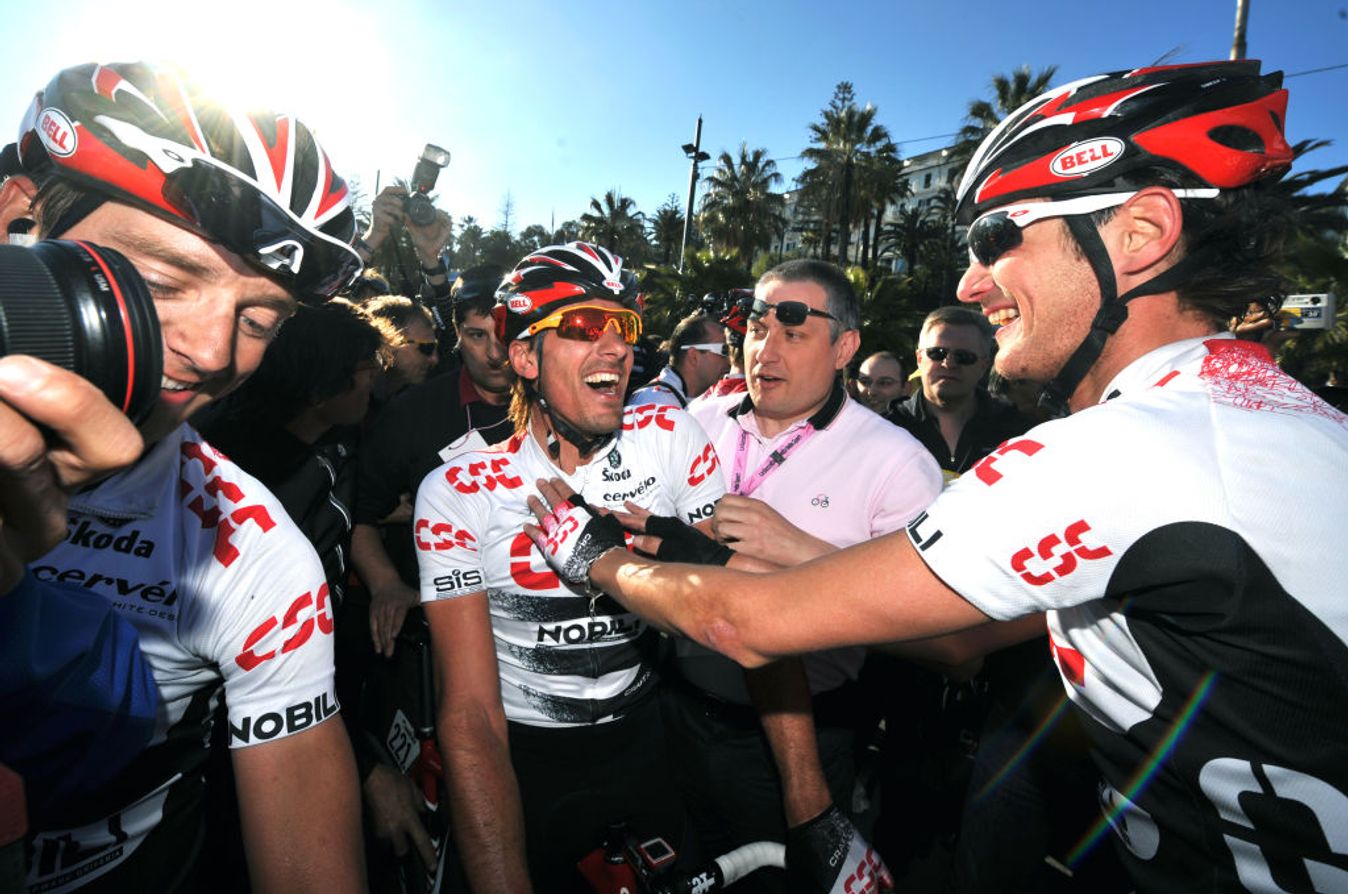
© Getty Images
Cancellara and his teammate celebrate his victory in San Remo
A couple of weeks after Milan-San Remo at Paris-Roubaix, Cancellara would lose one of his legendary duels with Tom Boonen on the velodrome. That summer, Cancellara would go on to win a gold and silver medal at the Beijing Olympics. With a résumé like that, 2008 was one of the years that cemented Cancellara's place at the top of the sport.
Read more: Spring Classics 2024: Essential guide to the races and riders
Nevertheless, what made victory at Milan-San Remo so special was its singularity. Cancellara — whose palmarès as a cyclist include 58 time trial wins, enough yellow jerseys to last the month of February, four rainbow jerseys, a hat trick of wins at Roubaix, Flanders, E3 and Strade Bianche, and two Olympic gold medals — rarely won races once. It seemed like he either had the winning formula and could recreate it when he needed to, or he did not.
And yet at Milan-San Remo, just once on that day near the peak of Cancellara’s powers, he was perfect. Centrally, that is why the race is so special; that is why it is La Classicissima, the greatest of the Classics. Even for some of the greatest riders, one perfect day is what they need to win the race.
You can check out our dedicated race page for Milan-San Remo, to discover the route, startlist and our official preview.
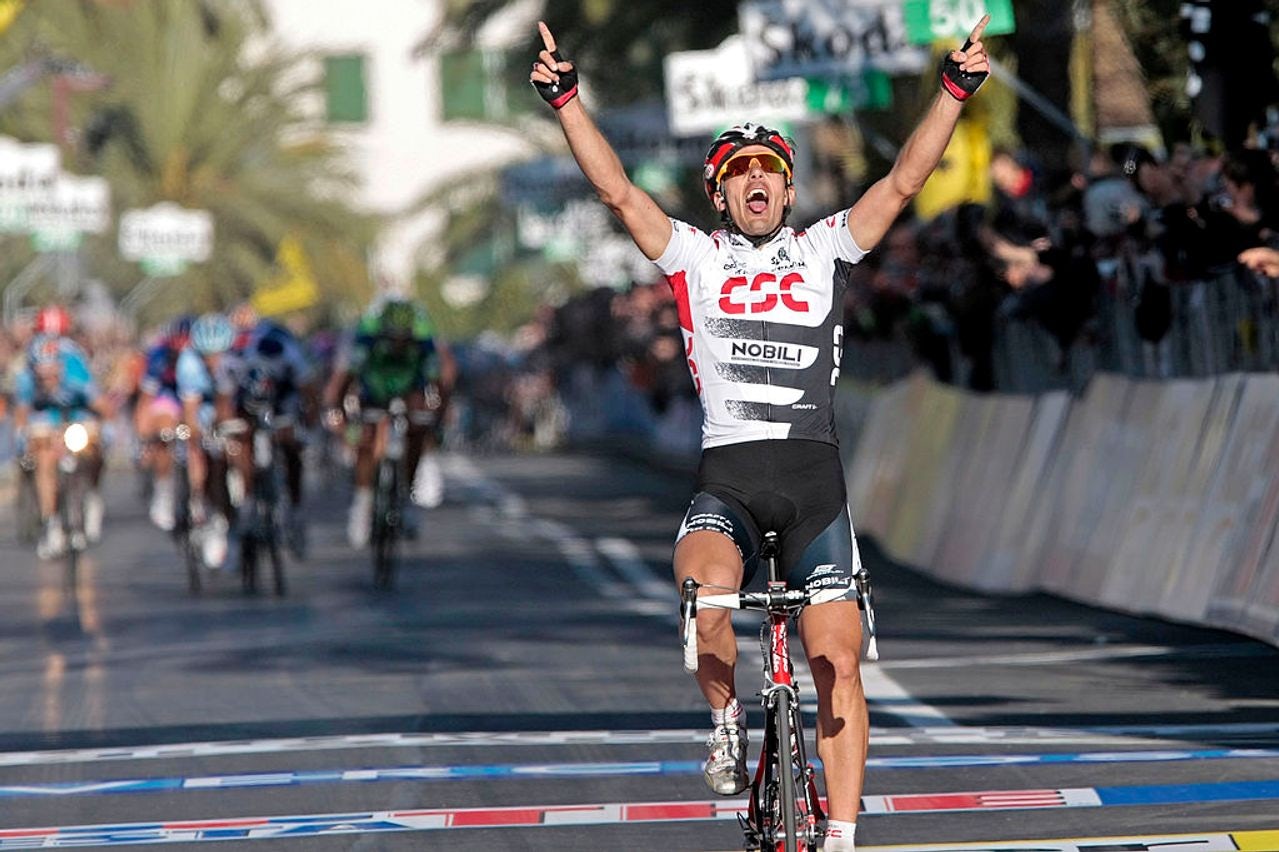









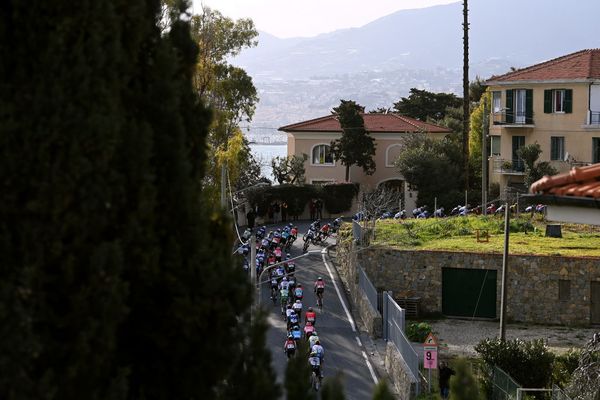
.jpeg?w=600&auto=format)

